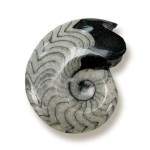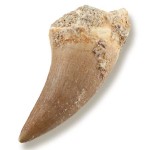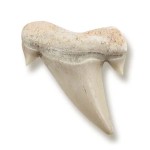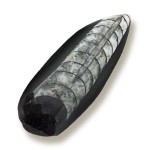Product Description
FOUND IN: NORTH AMERICA, EUROPE, NORTH AFRICA, AUSTRALASIA.
Goniatites are Ammonoids with a distinctive goniotitic zig-zag pattern in the sutures that mark the spiraling growth of the shell. The extinct ammonite that decended from Nautiloids is an example of the remarkable symmetry often found in nature. Mineral exchange over the eons can create an amazing array of contrasting colors and the beautiful natural display you see here. Ammonites were Cephalopods sharing a common ancestor with the squid and octopus. The ammonites that appeared in the Devonian became very diverse and widespread in the Paleozoic and Mesazoic before going extinct along with the dinosaurs at the end of the Cretaceous period. The goniatites lived early in the Devonian period, some 400 million years ago, and became extinct during the Permian period.
Ecologically, goniatites were limited to environments of normal-marine salinity—as appears to be the case for all cephalopods throughout their history. Goniatites are much more abundant and speciose in rocks understood to represent cratonic (also called epicontinental or inland) sea sediments than they are in rocks understood to represent open ocean sediments. Within these inland seas, goniatites’ greatest abundance and diversity appears to have been achieved in offshore deep ramp and basinal environments rather than in nearshore environments. Known nearshore (e.g., lagoonal) occurrences have generally been ascribed to wash-in of shells from offshore waters.
Due to lack of strong evidence for any particular life mode (e.g., nektonic, planktonic, demersal, planktivorous, piscivorous), it remains unclear what resources goniatites were capitalizing on in these offshore environments. Only a few goniatites’ full trophic apparatuses have ever been described, and reports of stomach contents in these creatures’ fossils remain questionable at best. However, goniatites clearly lacked the calcified jaw apparatuses developed later in ammonoid history by the ammonites; this has been cited as evidence against a durophagous (shell-crushing) diet for goniatites.
CLASSIFICATION:
Kingdom: Animalia
Phylum: Mollusca
Class: Cephalopoda
Subclass: Goniatitida




